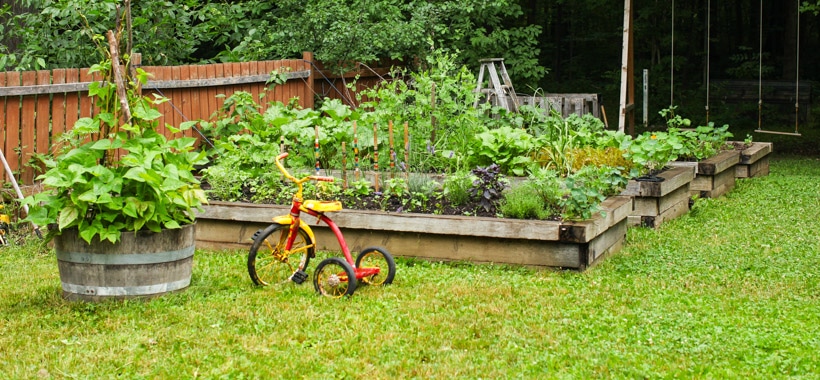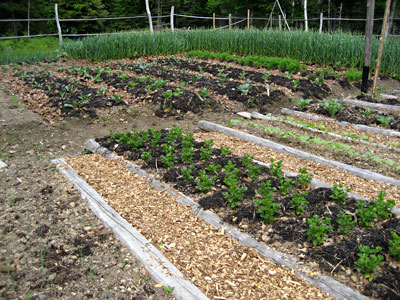The Growing Trend of Homestead Gardening
Enhance Your Outdoor Area With Creative Horticulture Styles and Designs
The outside location of a home serves as an extension of personal room, using possibilities for imagination and expression via gardening. By checking out numerous styles, such as the charming informality of cottage gardens or the minimalism of modern-day aesthetic appeals, one can significantly raise the setting of their surroundings. Furthermore, integrating upright gardening methods and lasting techniques not just improves aesthetic allure but likewise promotes ecological consciousness. With many themed layouts readily available, the potential for improvement is vast, prompting the concern of which technique will certainly best show your vision for an exterior sanctuary.

Cottage Yard Charm
Cottage gardens, frequently characterized by their lush, casual layouts, welcome an unified mix of vegetables, natural herbs, and blossoms, developing a lively tapestry of color and scent. This standard gardening style go back to the late 19th century, stemming in England, and is prized for its lovely, romantic allure.
Key aspects of cottage yards consist of making use of perennial plants, climbing up vines, and self-seeding annuals, which add to an ever-evolving landscape. Growing in thick clusters urges a naturalistic appearance, allowing for an eclectic mix of textures and colors. Popular flowers such as hollyhocks, foxgloves, and delphiniums intermingle with great smelling natural herbs like lavender and rosemary, improving sensory experiences while advertising biodiversity.
Integrating rustic features, such as weather-beaten trellises, wooden fences, or stone paths, additionally enhances the visual of a cottage yard. This style not just prioritizes elegance but also welcomes sustainability, as numerous plants are picked for their ability to attract pollinators and give food. Eventually, the home garden appeal hinges on its unwinded, welcoming atmosphere, urging a deep connection with nature while using a picturesque retreat for leisure and enjoyment.
Modern Landscape Aesthetics
While the appeal of cottage gardens stimulates a feeling of nostalgia and fancifulness, modern-day landscape visual appeals welcome a more minimalist and structured approach. This contemporary design stresses simplicity, capability, and a combination with the surrounding setting. Tidy lines, geometric shapes, and a minimal shade scheme characterize modern landscaping, enabling nature's beauty to take facility phase without unneeded distractions.
Materials play a crucial function in attaining this visual. Concrete, steel, and all-natural rock are frequently utilized to produce hardscapes that match the landscape rather than overwhelm it. Furthermore, the cautious choice of plants is basic; indigenous types and decorative lawns are usually preferred for their reduced upkeep and capability to prosper in regional problems.
Water attributes, such as smooth fish ponds or mirroring swimming pools, are also essential to modern designs, providing serenity and a prime focus. Sustainable techniques, consisting of xeriscaping and using permeable materials, improve the environmental responsibility of modern landscape design. Eventually, modern-day landscape aesthetics offer a possibility to develop relaxing outside rooms that show contemporary values while cultivating a much deeper link to nature.
Vertical Gardening Technologies
Upright horticulture technologies have actually transformed the way we come close to gardening in limited spaces, enabling the farming of plants in metropolitan environments where ground area is limited. These innovative strategies and structures permit garden enthusiasts to make the most of upright surface areas, transforming walls, fences, and even porches into lavish eco-friendly spaces.
One famous development is the use of modular systems, which contain interlacing panels that can be easily set up and rearranged - Homestead Gardening. These panels usually come furnished with integrated irrigation systems, ensuring that plants obtain sufficient dampness while reducing water waste. In addition, vertical gardens can include a range of plants, from blooming varieties to edible herbs, promoting biodiversity and boosting visual appeals
An additional noteworthy improvement is the assimilation of wise modern technology, such as sensors that keep track of dirt dampness and nutrient degrees. This technology enables exact treatment customized to the demands of individual plants, making sure optimum growth and health. Upright planters and light-weight products made from recycled items add to sustainability while decreasing the physical concern of standard horticulture.
Sustainable Horticulture Practices
Sustainable gardening practices have arised as an essential approach for garden enthusiasts looking for to lessen their environmental effect while improving the wellness of their ecosystems. These techniques concentrate on the mindful monitoring of all-natural resources, advertising biodiversity, and cultivating a resilient landscape.
One key element of sustainable horticulture is soil health. Utilizing organic compost, mulching, and plant rotation enriches the dirt, promoting useful that site microorganisms and reducing the demand for chemical fertilizers. Furthermore, indigenous plants are urged, as they call for much less water and are much more immune to neighborhood parasites, thus decreasing reliance on pesticides.

Furthermore, lasting gardening urges the use of recycled products for garden structures and paths, lowering waste and ecological impact. By embracing these practices, gardeners can develop a successful exterior room that harmonizes with nature, making sure both personal enjoyment and ecological responsibility.
Themed Garden Inspirations
Developing a themed garden can change a common outside space right into a fascinating sanctuary click for info that mirrors individual style and rate of interests. Themed yards offer an unique opportunity to express imagination while boosting the aesthetic appeal of one's landscape. Popular themes consist of Japanese Zen gardens, which emphasize harmony via carefully prepared stones, water functions, and minimalist growings.
An additional motivating style is the home yard, identified by a casual layout loaded with an abundance of vivid blossoms and great smelling natural herbs. This style promotes biodiversity and attracts pollinators, making it both attractive and ecologically useful.
For those with a fondness for adventure, an exotic yard can evoke a holiday feeling, featuring bold foliage, dynamic blooms, and perhaps even a tiny water attribute to imitate a hotel ambience.
Alternatively, a themed yard can attract motivation from literary works or background, such as a Shakespearean garden that integrates plants discussed in the Poet's jobs.
Picking a style not only provides instructions in plant choice and design however also creates a natural atmosphere that invites exploration and satisfaction, making exterior areas truly distinctive.
Final Thought

Integrating rustic attributes, such as weathered trellises, wooden fencings, or rock pathways, better improves the aesthetic of a cottage garden. In addition, upright yards can incorporate a range of plants, from blooming varieties to edible herbs, promoting biodiversity and improving looks.
Creating a themed garden can transform an average exterior space into a captivating shelter that mirrors personal design and interests. Themed yards supply a distinct possibility to share creativity while enhancing the visual appeal of one's landscape. The charm of cottage gardens, the sleekness of modern landscapes, innovative vertical horticulture strategies, lasting methods, and themed yards each contribute distinct aspects that promote both appeal and capability.